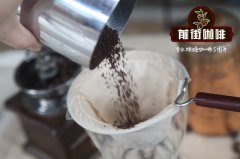Flavor characteristics of Rwandan Coffee treated by Information Solar and Honey in Rwanda Rugali Lugali processing Plant

Professional coffee knowledge exchange More coffee bean information Please pay attention to coffee workshop (Weixin Official Accounts cafe_style)
The Rugali plant is one of only two plants in Rwanda approved for sun and honey treatment, and the climate here in Rugali allows beans to dry at a slower rate. This slower drying process preserves the full flavor of the beans within their cells and extends their shelf life. Sun-dried beans like this are sun-dried on well-ventilated coffee beds, exposed to proper air and sun, turned every hour during which time, and hand-picked for defects. Because of this careful care, created such a clean with black tea and dried fruit flavor of sweet dry mouth. Enjoy this drink!
Flavor Description: Dried berry fruit, citrus, brown sugar tea
dried berry, citrus, brown sugar black tea
coffee processing
Once upon a time, coffee was handled differently on each farm, and beans from different farms would come together and mix with neighbors.
After the genocide, the country began to open up to foreign aid and revitalizing the coffee industry became a national priority. PEARL and SPREAD programs began to emerge in China to provide consistent training for farmers and to establish washing stations to match traditional coffee processing methods in East Africa. Burundi is one of those countries that uses this approach to its fullest extent.
Another noteworthy feature is the African Fully washed process, which involves soaking coffee beans twice, a practice not common in Latin America.
One of the most commendable things about Rwandan coffee is that after the coffee cherries are harvested, farmers pick out the green cherries first. Then, the ripe cherries are separated in the washing tank, and only the red cherries are sent to the husker. Depending on the weather conditions at the time, coffee cherries with residual pectin will ferment for 24-48 hours. The purpose of fermentation is to avoid spoiling the coffee flavor. Then send the clean coffee beans with the remaining sheepskin to dry. All coffee is dried on a net bed for 15-22 days, leaving about 11% moisture. When the weather is too hot, farmers must cover them with cloth, otherwise the drying process will be completed prematurely.
The best Rwandan beans should have a white skin and no cracks if the drying process is completed in time. This allows more organic compounds to be retained, and the shelf life can be extended while the taste is good.
Rwandan coffee beans grown at high altitudes are generally sweet and dense when treated with full water washing.
Rwanda Nyamasheke South Western Region Rugli CWS Natural
Country of Origin: Rwanda
Region: Nyamasheke District
Treatment plant/ Station: Rugaliwashing station Rugaliwashing station
Breed/ Varietals: red bourbon
Treatment/Processing: natural process
Important Notice :
前街咖啡 FrontStreet Coffee has moved to new addredd:
FrontStreet Coffee Address: 315,Donghua East Road,GuangZhou
Tel:020 38364473
- Prev

Story Information of Gasharu plus Charu processing Plant in Nimashek Coffee production area, Nyamasheke, Rwanda
For more information about coffee beans, please follow the Coffee Workshop (Wechat official account cafe_style) plus Charlene Gasharu washing Plant, which was established by Srestin Celestin Rumenerangabo in 2015 and officially launched the following year to handle coffee cherries. Factory owner Slastine Celestin Rumenerangabo already has a background in dealing with coffee cherries.
- Next

Papua New Guinea Sigri Sigri Estate Information Story Introduction New Guinea Coffee Bean Origin
Professional coffee knowledge exchange More coffee bean information Please pay attention to Coffee Workshop (Weixin Official Accounts cafe_style) Papua New Guinea Coffee Sigri Manor This project aims to establish sustainable working relationships with Sigri Manor, neighboring villages and coffee producers. This relationship is intended to support the development of further projects and recognizes the need to improve quality and flavor and to enable
Related
- Does Rose Summer choose Blue, Green or Red? Detailed explanation of Rose Summer Coffee plots and Classification in Panamanian Jade Manor
- What is the difference between the origin, producing area, processing plant, cooperative and manor of coffee beans?
- How fine does the espresso powder fit? how to grind the espresso?
- Sca coffee roasting degree color card coffee roasting degree 8 roasting color values what do you mean?
- The practice of lattes: how to make lattes at home
- Introduction to Indonesian Fine Coffee beans-- Java Coffee producing area of Indonesian Arabica Coffee
- How much will the flavor of light and medium roasted rose summer be expressed? What baking level is rose summer suitable for?
- Introduction to the characteristics of washing, sun-drying or wet-planing coffee commonly used in Mantenin, Indonesia
- Price characteristics of Arabica Coffee Bean Starbucks introduction to Manning Coffee Bean Taste producing area Variety Manor
- What is the authentic Yega flavor? What are the flavor characteristics of the really excellent Yejasuffi coffee beans?

